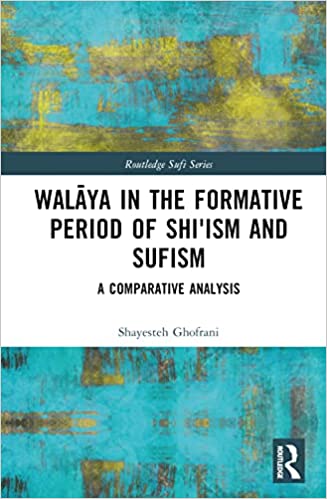Ghofrani (Shayesteh), Walaya in the Formative Period of Shi’ism and Sufism : A Comparative Analysis London, Routledge, 2023, 256 p. ISBN 978-1032432496
Auteur
Shayesteh Ghofrani is an independent scholar.After completing her Masters in Continental Philosophy, she received her PhD in Islamic Studies from the University of Exeter and continued with a postdoc at the Institute of Ismaili Studies in the UK. Her research interests include the formative period of Islamic history with a focus on Shi’ism and Sufism
Presentation

Focused on Shi’ism and Sufism in the formative period of Islam, this book examines the development of the concept of walāya, a complex term that has, over time, acquired a wide range of relationships with other theological ideas, chiefly in relation to the notion of authority.
The book offers a textual and comparative analysis of walāya based on primary sources in the ninth and tenth centuries, from both Shi’i and Sufi circles. The starting point is one of the oldest surviving Shi’i sources, Kitāb Sulaym. Alongside this, the author analyses al-Īḍāḥ of Faḍl Shādhān al-Nishābūrī, Kitāb al-Maḥāsin of al-Barqī and Kitāb al-Kāfī of al-Kulaynī. Three major texts in Sufism are considered : Kitāb al-Ṣidq by Abū Saʿīd al-Kharrāz, Tafsīr al-Qurʾan al-ʿAẓīm by Sahl al-Tustarī and Al-Tirmidhī’s Kitāb Sīrat al-Awliyāʾ. Together, these sources highlight the doctrinal aspects of walāya, exploring the identity, function, appointment, and description of those considered walī. The author ultimately argues that walāya is a cluster of rich, deep-rooted responses to the question of authority, developed within both Shi’ism and Sufism after the death of the Prophet.
Table des matières
Introduction 1. Walāya in Formative Shi’ism 2. Development of Walāya in Formative Shi’ism 3. Walāya in Formative Sufism 4. Development of Walāya in Formative Sufism 5. A Comparative Study of Walāya in Shi’ism and Sufism Conclusion
